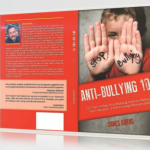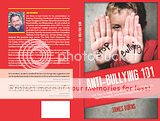by James Burns | Mar 16, 2019 | Burns' Bench
Bench Notice
You know I did a little digging just to see how many medications are used for disruptive behavior. I included it here.
Medications For Disruptive Behavior
Quite a list. I mention in the video the delineation between organic behavior problems, those of the clinical variety, and learned behaviors. My concern isn’t whether or not someone is taking medication. I mean, I take it for high blood pressure. My concern is are they taking it for the right reasons. If I am influenced by my genetics (as I am, my whole family has or had high blood pressure) does that me that I am so determined that I shouldn’t take responsibility for my condition? You know the answer. The biggest problem that we have is self control. We don’t teach it enough, and then the child’s impulses begin to take over, and he or she become fearless. Please read this article as my parting shot.
Self Control: There Is “NUN” Better

by James Burns | Oct 28, 2018 | James Burns, Parents, Teachers, The Bully Proof Classroom, The Ramblings of a Dinosaur
Going to a Catholic grammar school for nine years had its benefits. We had to wear uniforms so there wasn’t any clothes competition. We went to church all the time so we got some formal spiritual training. You couldn’t even think of using profanity because you thought the nuns could read your mind and would find out what you were thinking. We learned good penmanship. We were respectful, compliant, and responsible.
The crazy thing is no one gave me a choice in any of these areas I was forced to do them. It wasn’t like the nun said to me you can go to church if you like, or why don’t you try to hold your pencil this way, or is that the way to speak to someone? If I didn’t do it the way it was supposed to be done, my blood stains would be on the floor.
As I look back at this experience, the one thing that I realize is that this type of education taught me something that no one talks about today and that’s self-control. The majority of the problems that a person faces in their life are related to a lack of self-control. Everybody either eats too much, drinks too much, spends too much, can’t control their temper, lusts after things that they can’t have like someone else’s spouse, and develops habits that they can’t break that could kill them or someone else like smoking or driving too fast. Now why does all this happen? Well, I never remember my parents or any teacher in my life saying to me the choice is yours: You can smoke or not. You can lose your temper or not. You can overeat or not.
Self-control is taught. If I did something that exhibited a lack of self-control, I got grabbed by someone and got reamed out or in the worst case scenario got clobbered. I was taught to wait on line, raise my hand, take my time, practice until I got it right, memorize, and I got drilled on skills that every-one knew were necessary for life long success. Look, musicians practice endless hours to perform a single piece of music. Students study instead of watch TV. Athletes devote years of their lives to prepare for an Olympic event that may last only a few minutes.
The concepts of self-control, delayed gratification and discipline seem so counter to our cultural values. We use our credit cards because we want things right away. We become impatient if we wait more than a few moments at a drive-through at McDonald’s. We eat ourselves into obesity and poor health because it feels good, with little consideration of the long-term consequences. Self-control should be graded in school and looked at as a quality necessary for success as an adult. If you or someone you know is having trouble with self-control I have a good friend named Sister Houlihan who still thinks self-control is important. She is 4 feet 8 inches tall and she can still make a grown man hold his pencil the right way!
[ecwid_product id=”117250099″ display=”picture title price options addtobag” version=”2″ show_border=”1″ show_price_on_button=”1″ center_align=”1″]
by James Burns | Dec 1, 2013 | Anti Bullying Tips, Bully Proof Classroom, Radio Show, Teachers, The Bully Proof Classroom
If you were to pick up a textbook on educational methodology and looked through it you would find models that educators have used for years. And I mean for years. A current textbook will have the same models in it that were considered current forty years ago. In the past these models were proven to help educators deal with student academic and behavioral performance and were part of the intervention process when students struggled with social, emotional, and conduct issues. Educators have used these models with some success but, as we have moved through the generations these models have suffered from what I call over use injury. The models haven’t changed but student behavior has, and the models have been used more now as a crutch than an intervention and do very little to help educators deal with the chronic behavioral issues in their schools. Behaviors such as disrespect, irresponsibility, bullying, violence, power struggles, lack of student motivation, clinical issues such as depression and ADHD and other issues were all problems that educators faced many years ago, but the intensity and frequency of these behaviors has become now the norm and not the exception. Let me make something very clear; an intervention is only an intervention if student behavior changes. Using an intervention that students are now immune to will only ceremoniously allow educators to say that something is being done; whether it works or not. So, what are these models? There are four of them, the biological/organic model, the behavioral model, the environmental model, and the psycho-educational model. All of them had their advantages many years ago, but now they suffer from what I call over use injury and may only work in a very controlled environment such as prison, or an inpatient psychiatric unit. Let me spell out for you how these models were used and are used now and help you understand how intergenerationally students have adapted to these interventions and why they no longer net the same results that they did in the past.
The Organic/Biological Model
Our bodies can at times suffer from organic imperfections that can cause high blood pressure, cancer, stroke, or other diseases that can be treated with medications or other medical interventions that basically can keep a person alive. The wonders and the evolution of medicine have increased society’s life span by more than 15 years since the 1940’s, and is a necessary commodity if a person wants to maintain quality of life. Usually a blood or other test reveals the cause of certain symptoms that prompts the doctor to place his/her patient on medication to lower blood pressure or aid in the relief of those symptoms. Children who are behavioral problems have too often been treated with Ritalin or other psychotropic drugs as a means of controlling out of control behavior and all too often these drugs are used as the first resort and not the last. As an administrator I have called many parents about their child’s behavior only to be told that the child didn’t take his pill that morning or that the prescription has run out and they have to get to the doctor or the pharmacy for a refill. The debate is not whether or not to medicate a child, rather the debate is what the medication does to a child and is medication the only answer. Those in the mental health industry will tell you that therapy along with medication nets the best result when dealing with a client, it would seem rather apparent that medication along with fair, firm, and consistent discipline that is balanced with rules and compassion would net the best result in education as well. The truth is the so called quick fix may be what we are looking for. A person with high blood pressure has to take responsibility for his own health by walking, eating right, and watching his weight; this along with medication will help to lower his blood pressure. Students need to take responsibility for their behavior through the imposition of consequences, if not the only thing educators can expect is temporary relief, not permanent help.
Parents who discover that their son or daughter may have ADHD are at times relieved to find this out because they then can transfer the burden of responsibility to the school who they will claim doesn’t understand their child’s condition and can very easily convert the reasons for the child’s unruly behavior to an excuse. Once excuses are used behavioral problems escalate and by default we can unwittingly agree with the behavior as it hides behind the condition. In reality it may not be a condition at all rather, a learned behavior.
The organic/biological model can at times cause educators to lower their expectations for student behavior as well. As a teacher I would meet parents at conferences only to discover that the parent in their own way had the same personality characteristics as their child. This discovery would send me to the faculty room crying out “I know now why Joe is the way he is, I just met his father or mother and they’re as weird as he is.” I will admit that once this happened I saw no hope and began to lower my expectation for the student. Genetics only influence student behavior, they don’t determine it. A person can change their response to the influences of poor genetics and begin to unlearn some of the behaviors that are interfering with his/her learning. Students need to be taught how to rise above any genetic imperfection and this can only happen when we increase our expectations. Lowering expectations will only give the student the idea that they are incapable of not behaving in a manner that is acceptable to a family, a school, or society in general.
The Behavioral Model
When students or even adults contemplate certain actions they do so based upon two very important outcomes. What am I going to gain, and what am I going to lose. If the lose is great enough the risk might be too high. If the risk is at a minimum they may jump in feet first. If the consequence from the loss is too great they may evaluate taking that risk again. Students are in a constant state of evaluation and ask themselves these questions when they are thinking about doing something that could result in some uncomfortable consequences. For students who lack good judgment and are always involved in some type of misconduct educators use a behavioral approach and place the student on a behavior modification program. In other words they receive a reward for acting and behaving in appropriate ways as opposed to exhibiting poor judgment. If I understand this correctly students are rewarded when they change their behavior; which makes sense. But, what about the students who exhibit positive behaviors all the time, where is their reward? To the students who are always on the right track it would be to their advantage to act up and then change their behavior once they receive their reward. Behavior modification does work, but it is so extrinsic that students can’t maintain their positive behavior once the rewards stop coming. Many years ago students were rewarded for going above and beyond the behavioral expectations of the teacher, now students are rewarded for what they should be doing anyway, such as staying in their seat or being on time for school. Because of the over use injury that this model has sustained kids look to be rewarded for anything and everything. The students feel good about themselves for no apparent reason, it is a temporary fix, and once the novelty of the reward wears off the behavior continues. In addition the stakes have been raised with children in homes being given high end items for doing something that in years past would have been viewed as daily household chores. The same is true with the use of praise. A student could exhibit positive behavior for a day or two and the teacher falls all over this child with an avalanche of positive comments that do nothing more than put pressure on the student to continue to live up to expectations that he/she is incapable of. Praise if given too frequently can become like white noise in the mind of the student with him or her almost not believing the comments themselves. Praise needs to be given on a 1-9 ratio, for every one correction there needs to be nine statements of praise doled out. With ten months in the school year that should be one solid comment of praise once a month. In between educators need to strengthen their relationship with their students by practicing the 2X10. Two minutes a day for 10 days straight a conversation needs to take place with a student that is the most unlikeable and unruly. This conversation will strengthen the student/teacher bond and by the eighth day the student will be looking for the conversation. This breeds respect which if not present no amount of praise will change student behavior.
The Environmental Model
As a special educator I used the environmental model much of the time. My students needed to work at desks that had blinders on them, use head phones, and were given individual instruction. With behavior problems the students were spread out all over the room to avoid verbal confrontations. The environmental model worked. By today’s standard the environmental model has taken on a whole different meaning. Parents request that their child’s schedule be changed because they are not getting along with the teacher or other students in the class. Students are now given individual personal aids to monitor them because their behavior is so out of control. No Child Left Behind standards now have teachers preparing individual lessons for many students in their room with two or three teachers in the room to aid with instruction. The environment has been modified to a point where more emphasis is placed on the 20% of the students with difficulty rather than on the 80% who want and deserve a quality education. The environmental model suffers from severe over use injury and no longer is used in education for what it was intended for. In reality environments are not modified for adults in the work environment. Oh, if an individual has a disability and needs modifications to perform their job duties they are protected under law but no employer will modify an environment due to an individuals poor social skills or lack of motivation. A person with this type of profile will provide all the evidence that will support the employer’s belief and they most times will be terminated. The environmental model needs to be used as an intervention to improve student performance not offer a way out due to poor behavior or social inadequacies.
The Psycho-Educational Model
When a student’s behavior is out of control what factors in the student’s life do we have to consider? Some educators may consider the following: The parent’s are going through a messy divorce, alcoholism in the family, the student broke up with his/her boyfriend or girlfriend, low IQ, or they didn’t make a spots team. Which of these factors need to be considered? The truth is none of them. That is of course if you are a teacher. A social worker, behaviorist, or school psychologist would consider them all, and there in lies the problem. Teachers and support staff like the ones mentioned never have and never will get along in a school environment: why: because teachers seek consequences for inappropriate behavior and social workers et.al. seek reasons. This model has been over used and has suffered injury due to the fact that accountability for poor behavior has taken a back seat behind the guise of reasons which have become excuses. This model used to work well when teachers balanced their rules and regulations with compassion and understanding. That’s when the teacher did it all and offered an understanding ear after the student was disciplined. The minute that two people enter the discipline process a bad marriage begins to form with two very different philosophies being used. Students know this and just like parenting when mom says no ask dad, when the teacher is viewed as unfair enter the mental health professional to soothe the soul that feels maltreated. Some students need therapy and should receive it but it needs to be balanced with an environment that offers real world consequence.
The psycho-educational model has been misused and widely misunderstood by educators. The core psycho-educational principle is education has a role in emotional and behavioral change. . The rationale behind a psycho-educational approach is that, with a clear understanding of the mental condition, and self-knowledge of own strengths, community resources, and coping skills, the individual is better equipped to deal with the problem and to contribute to his or her own emotional well-being. Consequently, improved awareness of causes and effects leads to improved self-efficacy (the person believing that he is able to manage the situation), and improved self-efficacy leads to better self-control. In other words, the person feels less helpless about the situation and more in control of himself or herself. This model if used correctly can make a difference in the lives of students and parents as long as in the process of disciplining students educators and other mental health professionals work together in understanding a student’s diagnosis and use that diagnosis to educate and improve student accountability and not excuse unruly behavior behind a condition.
by James Burns | May 10, 2013 | Bully Proof Classroom, Daily News, Mayor Bloomberg, New York City, Parents, School Administrators, Teachers
New York City Schools Now Ban Butter
Okay, we have now entered The Twilight Zone. The City of New York’s department of education has concluded that butter is a threat to its school children and will severely discipline cafeteria workers who order this now banned substance and use it for preparing school meals. Mayor Michael Bloomberg leads this charge I’m sure, just as he led the failed charge to stop the sale of extra large sodas in the city. He’s worried about kids becoming obese. This is the same Michael Bloomberg who was the master of ceremonies at this year’s hot dog eating contest on Coney Island. In his speech during this glutinous event he stated that he was honored to be there to support these great eaters. What a hypocrite.
Childhood obesity, it’s the schools fault right? I don’t think so. Quite frankly I am sick of the schools getting blamed for what goes on in a dysfunctional society. Neil Cavuto a news caster for Fox News had fitness guru Jack LaLanne on his show about three years ago. The interview took place the day before the biggest eating day of the year, Thanksgiving. He posed the question to Jack; “Jack what we are going to do about this problem of childhood obesity and diabetes.” Jack emphatically answered; “The first thing we have to do is to get all the junk out of the schools.” Excuse me Jack, is it the schools fault these kids are overweight? Furthermore, not all kids are overweight, and should not have to be put on an institutional diet consisting of carrot sticks, and raisins. The kids who are going to eat junk food were introduced to it in their home by their parents and developed a taste for it long before they got to school. Sure, bar it from school, they’ll eat it at home.
Parents today are banned from coming into school with cupcakes to give to the teacher for a birthday celebration for their child. They almost have to go through a cupcake detector before they enter the building. It’s easier to get into the building with an automatic weapon then to sneak in with a pan of cupcakes. If Bloomberg is so worried about the health of our children then ban cigarette sales. He won’t because the taxes from cigarette sales support the city’s economy.
The Gestapo tactics that are being used by Bloomberg and the city’s department of ed. are the same things educators discourage kids from using when interacting with their peers; threats, intimidation, bullying, and control. Greg Floyd, president of Local 237 Teamsters, which represents the kitchen managers, said it best when he stated, “We understand the need for healthy meals, but we do not appreciate the administration bullying our members without giving them instructions on how to prepare meals” (Daily News Article) http://www.nydailynews.com/new-york/education-department-cracks-butter-cafeteria-article-1.1339986.
As a society and as a culture the focus has been placed on the wrong things and in the wrong place. Will banning butter create a kinder, caring, and more respectful learning environment? Will restricting a person’s personal dietary freedom eliminate behavior problems, violence, disrespect, and bullying from our schools or moreover from our culture? Stop the insanity, stop majoring in minors and realize that narrow minded politicians are trying to legislate morality and are becoming a bigger problem then butter could ever be for our children and our society.
by James Burns | Mar 10, 2013 | Anti Bullying Tips, Bully Proof Classroom, cyberbullying, Parents, Teachers
IDENTIFY the difference between jokes and serious statements.
CHOOSE friends with caution. Friends can be bullies, too.
WALK AWAY because your self respect is important to your well-being.
ACCEPT an apology from a bully only when you feel they deserve it.
EXPRESS your feelings appropriately, don’t let it get to the point where you seek revenge.
DOCUMENT any acts of bullying that you observe because journaling can help in problem solving
PARTICIPATE in activities that you enjoy and that you do well.
SEEK HELP and don’t take overwhelming matters into your own hands.
ARCHIVE threatening text, emails, or facebook post in case they’re ever needed later.
FACE your fears by asking yourself what you are really afraid of.






